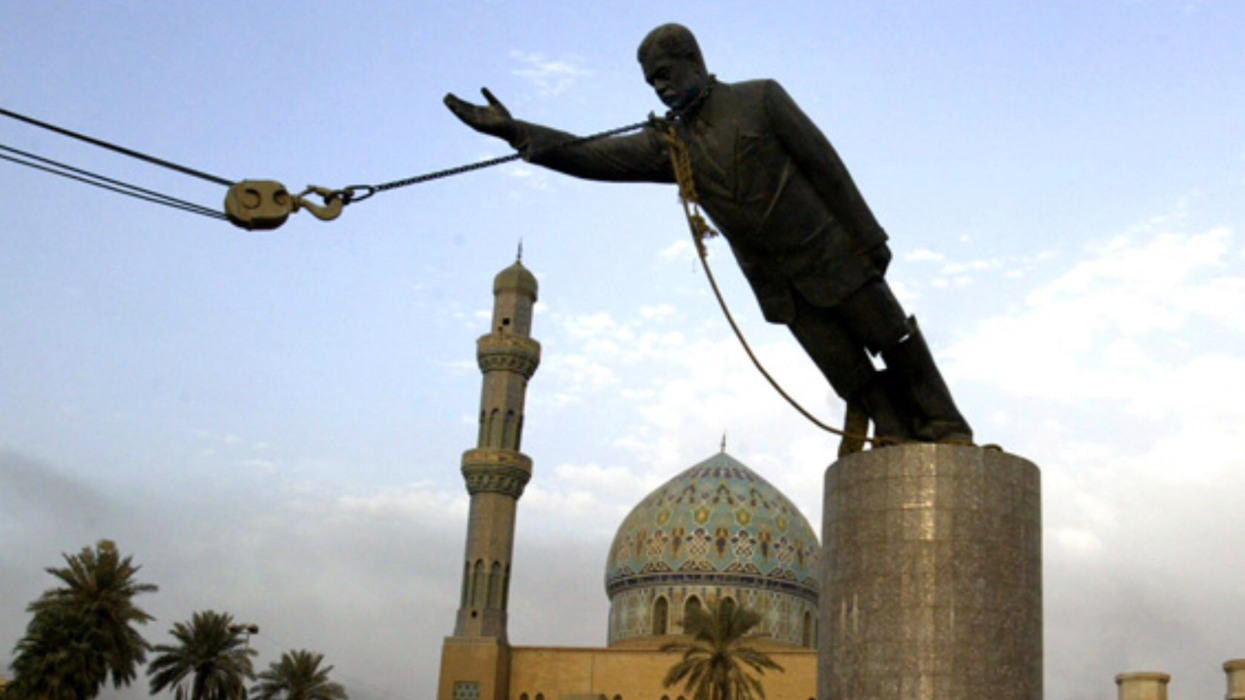Viral
Joanna Taylor
Jun 08, 2020
A statue of the slave trader Edward Colston has been pulled down by Black Lives Matter protesters in Bristol and thrown into the dock where his slave ships would once have landed.
The statue's toppling predictably sparked the criticism that pulling down monuments to terrible people erases history and the opportunity to educate people about their legacy.
But as many people pointed out, statues aren't exactly history textbooks or documentaries. They do not impart information, but are rather intended to honour the person they depict.
You know what’s just as satisfying as Edward Colston being tossed into the harbour? The million racist tears about… https://t.co/Cf5aNFUZ1t— Kerry-Anne Mendoza 🏳️🌈 (@Kerry-Anne Mendoza 🏳️🌈) 1591557591
People also pointed out that tearing down statues doesn't destroy history, but is actually a part of it.
Besides, the argument that statues are needed to educate us about historical figures does not stand up to scrutiny.
These are just some of the people whose legacies have managed to outlive the destruction of their statues.
1. Adolf Hitler
In the wake of the second world war, Nazi iconography was so thoroughly expunged from Germany that museums struggle to display original Nazi artefacts to this day. Memorials even to the German soldiers who died on the frontlines are extremely scarce in the country, and a racetrack where drivers can practice their donuts now cuts across the site of the Nuremberg rallies.
And yet, Brits and Germans seem to know their history when it comes to Adolf Hitler, not least because he is taught extensively in schools, and by countless books, films and documentaries.
2. Josef Stalin
A 26 foot high statue of Josef Stalin was famously pulled down in Budapest, Hungary in 1956. The statue's toppling by anti-soviet protesters is now recognised as an important symbolic moment of Hungary's October uprising.
(1) Began this day 1956, the Hungarian Revolution. A mass revolt against Soviet rule, here symbolised by the fall o… https://t.co/YNTky22zLm— James (@James) 1477231012
3. Christopher Columbus
In 2004, Venezuelan protesters pulled down a 100 year-old statue of Christopher Columbus and renamed Columbus Day the 'Day of Indigenous Resistance'. Columbus is in no danger of being forgotten, unlike the indigenous people who resisted his colonisation of the Americas.
4. Saddam Hussein
In 2003, the toppling of a statue of Saddam Hussein in Baghdad shortly after the Iraq invasion was widely publicised and praised in the UK. The statue was pulled down by US marines after several unsuccessful attempts by Iraqi civilians, and strangely no-one seemed to mind too much about 'erasing history' then.
Didn’t hear Priti Patel condemning the people who pulled down the statue of Saddam Hussein. https://t.co/vEH4vuUXDS— Paddletramp 🕷 🇪🇺 #FBPE (@Paddletramp 🕷 🇪🇺 #FBPE) 1591555324
5. Vladimir Lenin
So many statues of Vladimir Lenin were pulled down after the fall of the Soviet Union that there's a word for it: Leninopad ('Leninfall'). And yet the destruction of literally thousands of statues of Lenin has somehow not resulted in the destruction of Soviet history.
6. Emperor Nero
A testament to the longevity a historical figure can have in spite of the destruction of their statues is Emperor Nero, who ruled Rome from 54 to 68 AD. Nero himself was famously unperturbed by destruction, as he is said to have fiddled while Rome burned.
For those upset that the toppling of a statue of Edward Colston destroyed history, I politely draw your attention t… https://t.co/2cxPGadgVD— Durotriges Project (@Durotriges Project) 1591601408
7. Mahatma Gandhi
A statue of Mahatma Gandi was pulled down in 2018, just two years after it was erected at the university of Ghana. Protests by students and professors which culminated in the statue's falling did not diminish Gandhi's fame, but rather drew attention to his lesser-known history of racism.
Statues honouring slave traders for their philanthropy do not teach us about the slave trade, in the same way that monuments built by dictators of themselves do not teach us about their crimes.
The falling of a statue is not going to destroy that person's role in history.
“You’re erasing history by getting rid of Edward Colston’s statue!” Now Bristol only has: Colston Hill Colston Roa… https://t.co/aRE96ZzgGH— Hasan Patel 🌹 (@Hasan Patel 🌹) 1591555144
Instead, perhaps those who are concerned the toppling of Edward Colston will erase history will instead campaign for British colonialism and the slave trade to be taught more prominently in UK schools?
That'd be a start.
Top 100
The Conversation (0)














